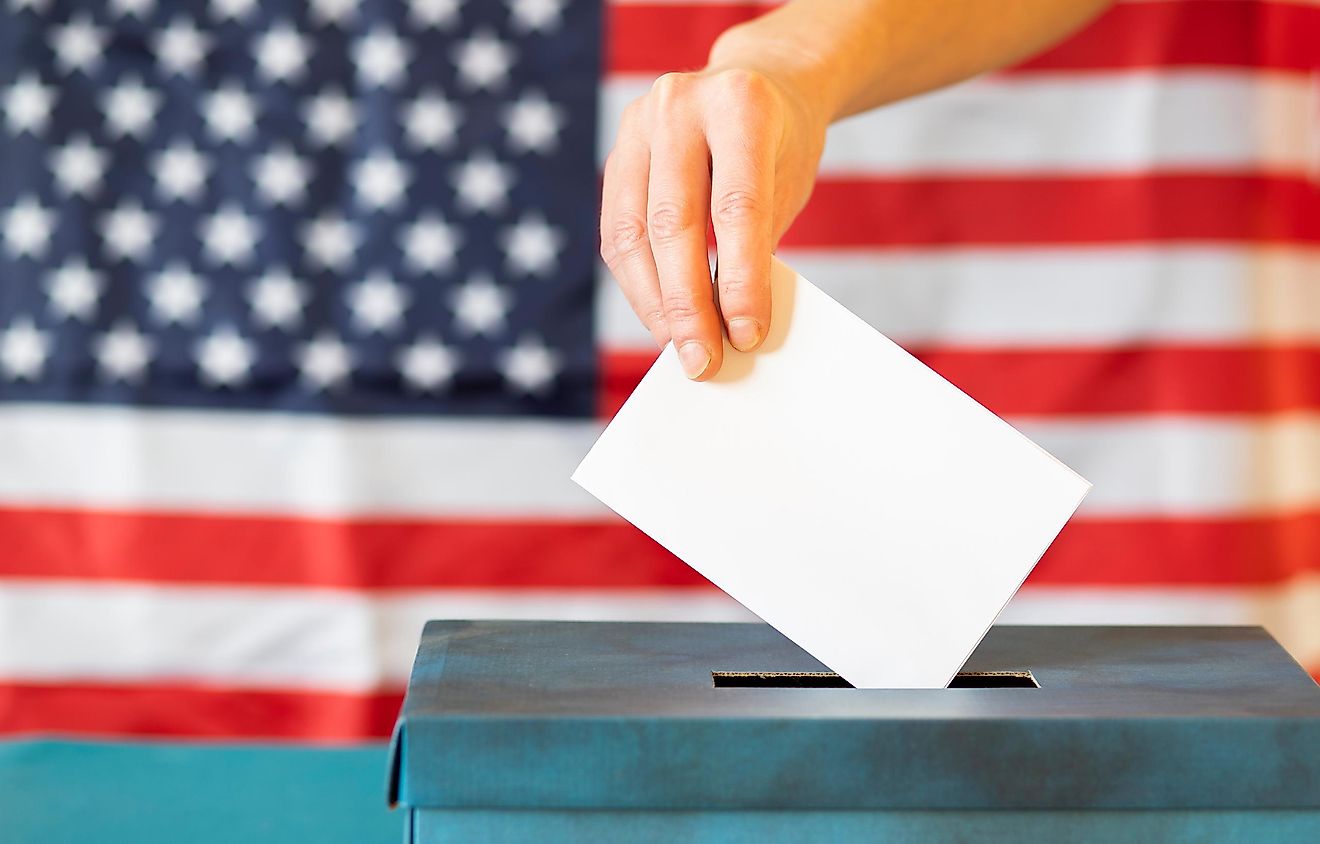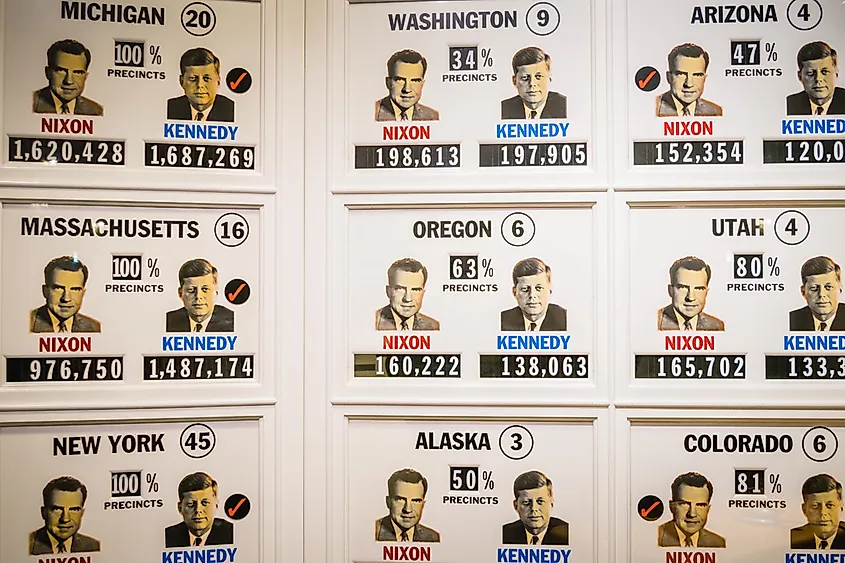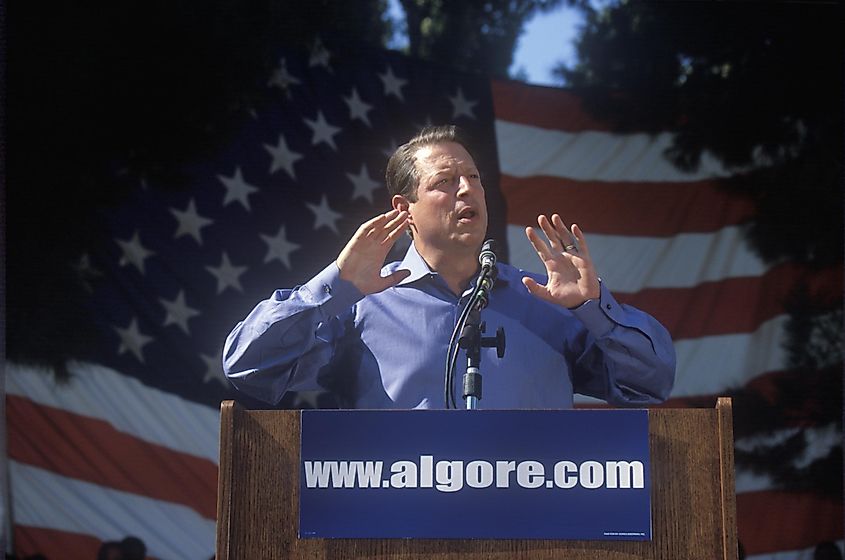Closest Elections In US History

- It is rumoured that the disputed 1876 election was decided by a secret deal between Hayes and Tilden.
- JFK won with only 0.2 percent more of the popular vote than Nixon.
- George Washington is the only US President to be unanimously elected.
The first US Presidential election in 1789 was a unanimous win for George Washington, with 69 seats in the electoral college at the time. Fittingly, the first election would become the only election in US history to see a unanimous victory. Today there are 538 seats in the electoral college, and many elections see very small margins for victory.
Determining Election Winners
US elections use the electoral college system, which is a representative republic style of voting. The numbers get complicated quickly due to the multiple steps that are involved in the electoral college system. Essentially, US citizens go to polling stations and see the names of the presidential candidates on their ballot. This is different from other types of representative democracy where voters elect a representative in their district, and the party with the majority of districts with their party representatives elected has the right to govern.
In the US, however, the electorate votes, and the result of their votes sends electors (the number of electors differs by state) to the Electoral College, where they are meant to cast their vote for the presidential candidate the district they represent has chosen. The result of this is that there are two ways to measure the outcome of an election—the electoral vote and the popular vote. The candidate that wins the Electoral College, wins the presidential election. Electors are supposed to, but not bound to, cast their vote for the candidate their electorate has chosen. Electors do not always vote with their districts, however, and it can result in an electoral college outcome that does not match the popular vote.
Recounting Ballots
Close election findings can be subject to a recount. Typically, recounts do not turn losing candidates into winners, but there are exceptions to be found in Senate and gubernatorial elections. Recounts happen on a state-by-state basis, and the rules are not consistent. 20 states have legislation that triggers automatic recounts in specific circumstances, and 43 states have provisions to allow for a recount to be requested.
Rutherford B. Hayes v. Samuel Tilden - 1876
While the last few years have seen some unprecedented moves in politics, political drama in the US is not new. In 1876, the election battle between Rutherford B. Hayes and Samuel Tilden was ruthless. Several states’ votes were disputed, fraud allegations were levied, and a special commission was convened to determine the outcome of the electoral college votes. The commission deliberated until three days before the inauguration, finally delivering a win for Rutherford B. Hayes. In 1876, news traveled slower than today. With no 24-hour news cycle, social media, and nearly instant communication, the American people waited much longer to discover who their new President was.

Nixon v. Kennedy - 1960
Not many elections in US history come closer than Richard Nixon v. John F. Kennedy (JFK). In 1960, Nixon narrowly lost the presidential election race to Kennedy by 0.2 percent of the popular vote. The US was in the midst of the Vietnam War, and the political climate in the US was polarized. Anti-war rallies and political rallies often became one and the same. Both candidates had distinct personalities, different factors that earned them voters, and opposing policy beliefs. Supporters of each candidate ferociously fought for their chosen leader, resulting in one of the closest elections in US history. The split in the Kennedy v. Nixon election was exemplary of the societal divisions within the US at the time.

George W. Bush v. Al Gore - 2000
Texan Republican George W. Bush. took the win in the 2000 election race over Democrat Al Gore by only 5 electoral votes. In fact, Gore received 0.5 percent more of the popular vote than Bush, but due to the numbers of electoral college votes allotted to each state, Bush won the electoral vote. This election had clear and strong opposing messages - Bush emphasized the economy, lower government involvement in business, and military strength, while Gore is most associated with environmental conservation, carbon emission control, and healthcare. Bushs’ win in this election is also notable as it made him only the second president whose father was also president, George H.W. Bush (1989-1993). The first father-son presidents were John Adams (1797-1801), and John Quincy Adams (1825-1829).











